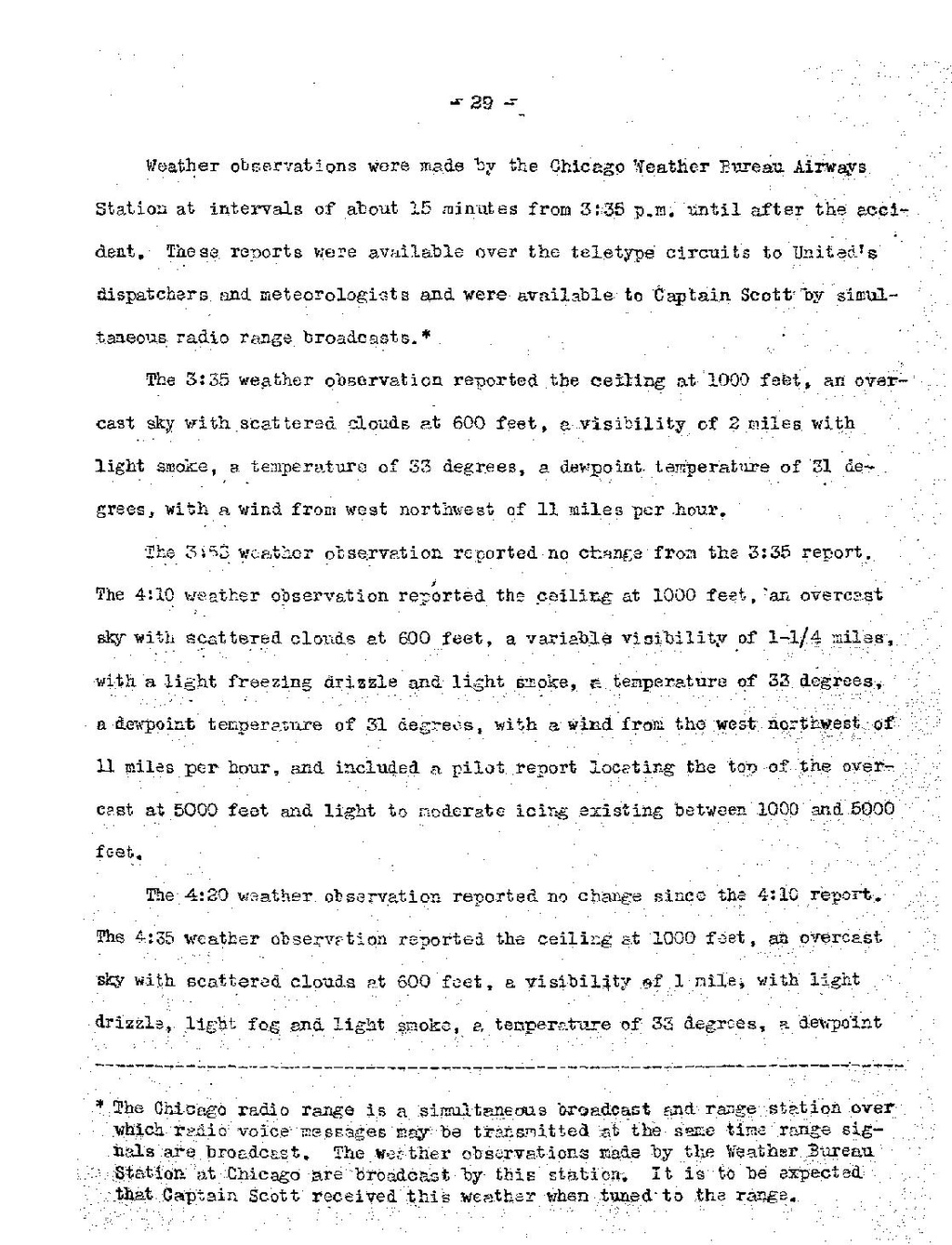- 29 -
Weather observations were made by the Chicago Weather Bureau Airways Station at intervals of about 15 minutes from 3:35 p.m. until after the accident. These reports were available over the teletype circuits to United's dispatchers and meteorologists and were available to Captain Scott by simultaneous radio range broadcasts.[1]
The 3:35 weather observation reported the ceiling at 1000 feet, an overcast sky with scattered clouds at 600 feet, a visibility of 2 miles with light smoke, a temperature of 33 degrees, a dewpoint temperature of 31 degrees, with a wind from west northwest of 11 miles per hour.
The 3:53 weather observation reported no change from the 3:35 report. The 4:10 weather observation reported the ceiling at 1000 feet, an overcast sky with scattered clouds at 600 feet, a variable visibility of 1¼ miles, with a light freezing drizzle and light smoke, a temperature of 33 degrees, a dewpoint temperature of 31 degrees, with a wind from the west northwest of 11 miles per hour, and included a pilot report locating the top of the overcast at 5000 feet and light to moderate icing existing between 1000 and 5000 feet.
The 4:20 weather observation reported no change since the 4:10 report. The 4:35 weather observation reported the ceiling at 1000 feet, and overcast sky with scattered clouds at 600 feet, a visibility of 1 mile, with light drizzle, light fog and light smoke, a temperature of 33 degrees, a dewpoint
- ↑ The Chicago radio range is a simultaneous broadcast and range station over which radio voice messages may be transmitted at the same time range signals are broadcast. The weather observations made by the Weather Bureau Station at Chicago are broadcast by this station. It is to be expected that Captain Scott received this weather when tuned to the range.
